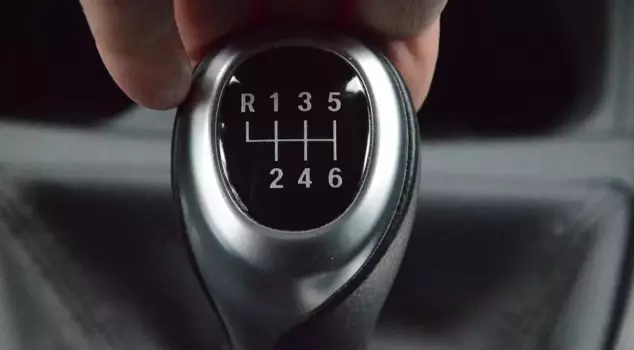
03.05.2025 14:10
Driving a manual transmission vehicle is a skill that requires attention and precision. However, some common habits can negatively impact both driving safety and the lifespan of the vehicle.
Driving a manual transmission vehicle may seem difficult at first glance, but it is not as complicated as you might think. This driving style is not just a skill; it is also an art and engineering experience that progresses in harmony with gear shifts. Of course, to fully enjoy the pleasure and safety of driving, one must avoid some basic mistakes. Here are the 10 most common mistakes made by manual transmission drivers...
1- Using the gear lever as an armrest
We only see the gear lever, but we cannot see what is happening inside the manual transmission. When you shift gears with the gear lever, the selector fork inside the manual transmission is pushed towards the rotating sleeve, and the sleeve is pressed towards the gear you want to select. Resting your hand on the gear lever can cause the selector fork to constantly contact the rotating sleeve, which may lead to premature failure of the selector fork.
2- Using the clutch to hold the vehicle on a slope
This situation will cause wear on the friction material of the clutch. There are many ways to prevent rolling down a slope without pressing the clutch, and it is important to focus on these methods while driving a manual vehicle.
3- Resting your foot on the clutch pedal
Keeping your foot on the clutch pedal causes the clutch to engage only partially, leading to slippage. This not only reduces fuel efficiency due to loss of power transfer but also causes premature wear of the clutch. Another component that may be damaged is the bearing, which can only partially contact the diaphragm spring. Remember to pay attention to this when driving a manual vehicle.
4- Pressing the gas pedal while the engine is at low RPM
Pressing the gas pedal is meant to accelerate the vehicle and make it move faster. However, for this to happen, the vehicle needs to receive enough gas to accelerate and perform normal gear shifts. Pressing the gas pedal at low engine RPM is harmful to the vehicle. It is also not healthy for your engine. Instead of pressing the gas pedal in fifth gear, downshift. Failing to do this can cause you significant problems in the long run.
5- Resting your foot on the clutch while driving
The clutch helps select the right gear for proper acceleration. Most people tend to keep their foot on the clutch pedal while the vehicle is moving to avoid having to move their foot at the moment of shifting. This is not a correct behavior as it will wear out your clutch. Keeping your foot on the clutch is a bad habit, so try to avoid it as much as possible.
6- Using the clutch's biting point to stop on a slope
When stopping on an inclined road, many people let the clutch out to the biting point and lightly use the gas to prevent the vehicle from rolling back. This can lead to significant wear on the clutch's friction material and may cause you to change the clutch prematurely. Cars with hill start assist systems tend to hold the vehicle for about 2-3 seconds after the driver releases the brake pedal.
7- Using the wrong gear to accelerate
Your vehicle's highest gear allows you to travel at higher speeds at lower engine RPM, thus saving fuel. However, you need to gradually increase the gears to prevent overstraining the engine while accelerating. You can strain the engine in two ways: First, by using a lower gear at a higher speed, you can cause the engine to reach its RPM limit (redline). It is better to shift to a higher gear before reaching the redline or when the gear indicator signals you.
8- Keeping the vehicle in gear at a stoplight
For most city dwellers, there will be an average traffic stop every kilometer in the city center.
Keeping the vehicle in gear at traffic lights will affect the transmission since the gear is engaged and the vehicle is not moving, leading to unnecessary wear on the clutch. When you put the vehicle in neutral at stoplights, you reduce overall wear on the clutch.
9- Shifting gears without pressing the clutch
The clutch disconnects the engine from the transmission every time you press the pedal. The clutch unit consists of a friction disc used to transmit power from the engine to the transmission. Therefore, you need to disconnect the engine from the transmission to shift gears. Shifting gears without using the clutch not only damages the transmission system but also has serious negative consequences for the engine.
10- Braking without the clutch
The clutch helps with gear shifting. It is also important when making hard stops. Do not disengage the clutch until the very last moment when braking. By keeping the engine engaged for as long as possible during a braking maneuver, you can take advantage of the vehicle's natural resistance, resulting in a shorter stopping distance and less wear on your brakes.